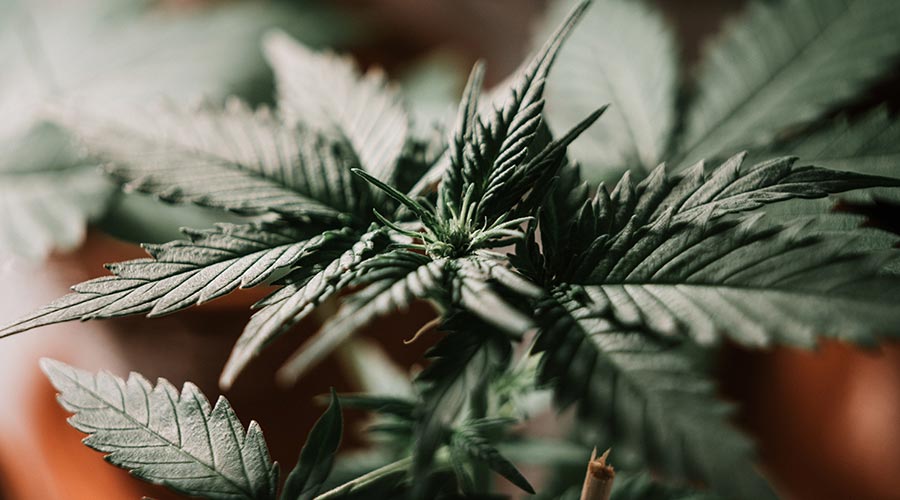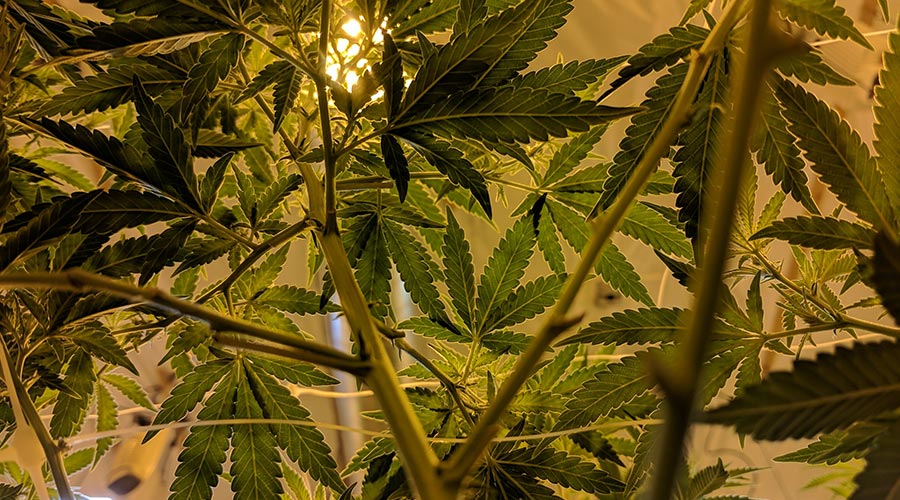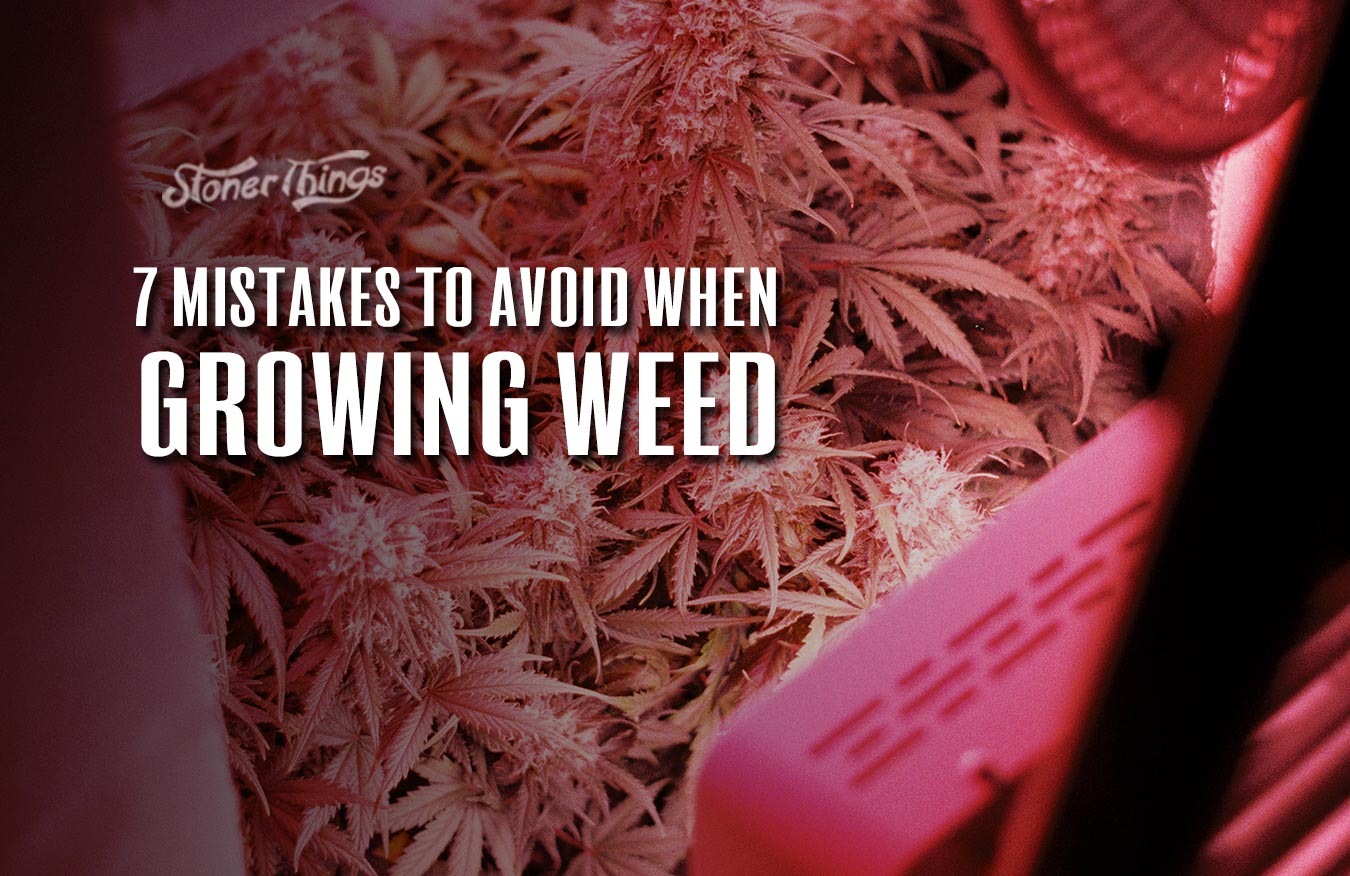For new or aspiring home growers and hobbyists, learning all the different nuances of cultivating weed can feel like an uphill battle. Simply put, a lot can go wrong! If you’re new to everything, there’s a good chance you might be making a few common mistakes that everyone goes through when they first start out. Luckily, the internet is your friend, and we’re here to help. Below are the top 7 common mistakes you might be making in your garden and how to recognize (and rectify) them.
1. Over or under watering
Overwatering is by far worse than the occasional underwatering. Cannabis is sturdy, so it can usually recover easily from being thirsty. However, overwatering quite literally drowns the roots and deprives them of the oxygen they need to take in nutrients. Further, overwatering can lead to nutrient lock, fungus and root rot. Let your soil dry out a bit before watering again. If you stick a finger in the top of the dirt, it shouldn’t feel soaked, but moist. You will want to make sure you water enough though. While the occasional dry spell isn’t a bad thing, too much underwatering or infrequent waterings can put stress on the plant that may stunt its growth or cause it to hermaphrodite.


2. Poor water quality
You really need to keep an eye on your pH levels when growing cannabis. Weed likes slightly acidic soil between 5.0-7.0 pH. If you run untested water through your soil, you could raise or lower the pH of the soil, which can cause yellowing leaves when its too high and stunted growth when its too low. You’ll want to keep the water you give your plants between 5.8 – 6.2. This range makes it easier for the plants to absorb all of the nutrients they pull from the soil. So be sure to invest in a pH test kit and additives that can raise or lower the pH of your water.
3. Over or under feeding
Overfeeding is dangerous as it leads to nutrient burn. Overfeeding coupled with overwatering also leads to nutrient lockout, which causes minerals to accumulate in the soil that start to burn your plants and inhibit them from absorbing other important nutrients. Don’t overdo it with nutrients, and flush your soil with water if you begin to see signs of nutrient burn. Keep your soil in the ideal pH ranges and hope for the best!
On the other hand, underfeeding your plants can cause problems too. Your plants will slow down on growth and take on a pale, sickly appearance. This also makes them fragile and stunts root growth. Keep an eye on what the leaves are telling you and look into the symptoms of nutrient deficiencies. Once you diagnose the problem, you can supplement your plants with the nutrients they need and get your grow back on track.
4. Poor climate
Climate is everything when it comes to growing weed and includes everything from your daily and nightly temperatures, your humidity levels, and the climate in the area you live. Cannabis plants have an ideal range for humidity levels and temperatures. Temperatures and RH levels that are too high or low can cause stunted growth and weakened buds.
At every stage of your plant’s lifecycle, it will require different temperatures and humidity levels, which we’ll break down below.
- Seedlings: 65-70% humidity & temperatures with lights on between 68-77 F°. When the lights are off, temperatures shouldn’t fall further than 8-9 F°. Plants must receive 18-24 hours of light per day.
- Vegetative Plants: Lower humidity levels by 5% each week of early veg until you find yourself between 40-60% RH. Temperatures can be slightly increased to simulate summer. The ideal temperature range is 71-82 F° during the day and 8-9 F° lower at night. Plants must receive 12 to 18 hours of light per day.
- Flowering Plants: Never go above 60% humidity in flowering to avoid bud rot and mold. Lower your humidity to 40-50%. Aim for 68-79°F during the day and 8-9 °F lower at night. Plants must receive no more than 12 hours of light per day.
- Late Flowering Plants: A few weeks before you harvest, lower your humidity to 30-40%. Lower daytime temperatures to 64-75 F° to simulate fall temperatures and increase the day/night temperature difference. At night, your plants can drop from daytime temperatures 9-18 °F.
Lastly, consider the climate of the area you already live in. If you live in a hot, dry area, you’ll want to run humidifiers. But if you’re in a wet one, you’ll probably opt for a dehumidifier. You will need to use vents, air conditioning, cooling fans and humidity controls to keep your indoor climate ideal. Outdoors, plants are at the mercy of the climate in the area you live.


5. Poor Infrastructure
The location you grow your plants is as important to their success as your climate, for indoor grows especially because so many things can go wrong. When you build your grow room you need to take extra precautions to develop your humidity, heating and cooling, ventilation, air filtration, pots, watering and lighting systems. You’ll want to run your room without any plants in it to stress test the electrical aspects as well as monitor your temperatures and levels. Collect data from the warmest and coolest points of the day and evaluate before you bring plants in to protect your investment. You may also want to bring in an electrician to ensure that your setup is safe for long-term use.
6. Harvesting too early or too late
Many newbies make the mistake of harvesting at the wrong time, which can negatively affect the overall quality and yield of your harvest. Harvesting too early will hurt your potency, and harvesting too late causes most of your THC to degrade into CBN — better known as sleep medicine. You’ll want to invest in a jeweler’s loupe, which will help you look closely at the trichomes on your flowers before you chop them down. The best time to harvest is when your trichomes are all cloudy white, with about 10-20% of them turning an amber color.
- Too early: Trichomes are all clear, or many have turned cloudy white, but not all of them
- Too late: Most trichomes are amber to red in color and there are little to no cloudy white ones left.
- Sweet spot: 10-20% of trichomes are amber colored and all the rest are milky white.
7. Not knowing what you’re growing
Every strain is very different while it’s growing. Based on their genetics, your seeds might be suited better for warmer or cooler climates, indoor or outdoor grows, soils with different pH levels, and so on. Some may be more susceptible to disease or nutrient deficiencies or pull more specific nutrients from your soil that may affect how well your growing medium does next season. With all of these nuances in play, you need to understand what strain you’re growing to better prepare your environment and be aware of common strain-related issues that may affect your harvest. Start by purchasing your seeds from a reliable source and do your research. There are dozens of forums out there with in-depth discussions for pretty much every strain under the sun.
Now that you know what NOT to do, you’re off to a great start. All you need is your plants and your equipment and you’re ready to grow.













